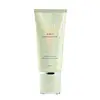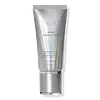What's inside
What's inside
 Key Ingredients
Key Ingredients

 Benefits
Benefits

 Concerns
Concerns

 Ingredients Side-by-side
Ingredients Side-by-side

Cyclopentasiloxane
EmollientDimethicone Crosspolymer
Emulsion StabilisingAluminum Starch Octenylsuccinate
AbsorbentIsohexadecane
EmollientIsononyl Isononanoate
EmollientCeramide AP
Skin ConditioningRetinol
Skin ConditioningLactic Acid
BufferingButyrospermum Parkii Butter
Skin ConditioningSodium Starch Octenylsuccinate
AbsorbentPhenoxyethanol
PreservativeMagnesium Myristate
Phenyl Trimethicone
Skin ConditioningSilica Silylate
EmollientCI 77891
Cosmetic ColorantIron Oxides
CI 77289
Cosmetic ColorantCyclopentasiloxane, Dimethicone Crosspolymer, Aluminum Starch Octenylsuccinate, Isohexadecane, Isononyl Isononanoate, Ceramide AP, Retinol, Lactic Acid, Butyrospermum Parkii Butter, Sodium Starch Octenylsuccinate, Phenoxyethanol, Magnesium Myristate, Phenyl Trimethicone, Silica Silylate, CI 77891, Iron Oxides, CI 77289
Water
Skin ConditioningCeteareth-6 Olivate
EmulsifyingCoconut Alkanes
EmollientNeopentyl Glycol Dicaprylate/Dicaprate
EmollientHydrogenated Olive Oil
Skin ConditioningPropanediol
SolventSqualane
EmollientCocos Nucifera Water
MaskingCocos Nucifera Fruit Juice
EmollientLactobacillus
Skin ConditioningAloe Barbadensis Leaf Juice
Skin ConditioningCaffeine
Skin ConditioningGlycyrrhiza Uralensis Root Extract
Skin ConditioningCeramide AP
Skin ConditioningRetinol
Skin ConditioningLactic Acid
BufferingButyrospermum Parkii Butter
Skin ConditioningSodium Starch Octenylsuccinate
AbsorbentGlycerin
HumectantPolyacrylate Crosspolymer-6
Emulsion StabilisingCoco-Caprylate/Caprate
EmollientOlea Europaea Fruit Oil
MaskingTrisodium Ethylenediamine Disuccinate
Olea Europaea Oil Unsaponifiables
Skin ConditioningCaprylic/Capric Triglyceride
MaskingAnanas Sativus Fruit Extract
Skin ConditioningCoffea Arabica Leaf/Seed Extract
MaskingJasminum Officinale Flower/Leaf Extract
MaskingDipteryx Odorata Seed Extract
MaskingCocos Nucifera Fruit Extract
EmollientPrunus Armeniaca Fruit Extract
Skin ConditioningCucumis Melo Cantalupensis Fruit Extract
AstringentVanilla Planifolia Fruit Extract
Skin ConditioningCitrus Aurantium Dulcis Peel Extract
Emulsion StabilisingPhenoxyethanol
PreservativeHexylene Glycol
EmulsifyingCaprylyl Glycol
EmollientSodium Benzoate
MaskingPotassium Sorbate
PreservativeWater, Ceteareth-6 Olivate, Coconut Alkanes, Neopentyl Glycol Dicaprylate/Dicaprate, Hydrogenated Olive Oil, Propanediol, Squalane, Cocos Nucifera Water, Cocos Nucifera Fruit Juice, Lactobacillus, Aloe Barbadensis Leaf Juice, Caffeine, Glycyrrhiza Uralensis Root Extract, Ceramide AP, Retinol, Lactic Acid, Butyrospermum Parkii Butter, Sodium Starch Octenylsuccinate, Glycerin, Polyacrylate Crosspolymer-6, Coco-Caprylate/Caprate, Olea Europaea Fruit Oil, Trisodium Ethylenediamine Disuccinate, Olea Europaea Oil Unsaponifiables, Caprylic/Capric Triglyceride, Ananas Sativus Fruit Extract, Coffea Arabica Leaf/Seed Extract, Jasminum Officinale Flower/Leaf Extract, Dipteryx Odorata Seed Extract, Cocos Nucifera Fruit Extract, Prunus Armeniaca Fruit Extract, Cucumis Melo Cantalupensis Fruit Extract, Vanilla Planifolia Fruit Extract, Citrus Aurantium Dulcis Peel Extract, Phenoxyethanol, Hexylene Glycol, Caprylyl Glycol, Sodium Benzoate, Potassium Sorbate
Ingredients Explained
These ingredients are found in both products.
Ingredients higher up in an ingredient list are typically present in a larger amount.
This ingredient is also known as shea butter. It is an effective skin hydrator and emollient.
Emollients help soothe and soften your skin. It does this by creating a protective film on your skin. This barrier helps trap moisture and keeps your skin hydrated. Emollients may be effective at treating dry or itchy skin.
Shea butter is rich in antioxidants. Antioxidants help fight free-radicals, or molecules that may harm the body. It is also full of fatty acids including stearic acid and linoleic acid. These acids help replenish the skin and keep skin moisturized.
While Shea Butter has an SPF rating of about 3-4, it is not a sunscreen replacement.
Shea butter may not be fungal acne safe. We recommend speaking with a professional if you have any concerns.
Learn more about Butyrospermum Parkii ButterCeramide AP is formally known as Ceramide 6.
Ceramides are intercellular lipids naturally found in our skin that bonds dead skin cells together to create a barrier. Having a strong skin barrier leads to more firm and hydrated skin.
They are known for their ability to hold water and thus are a great ingredient for dry skin. By bolstering the skin ceramides act as a barrier against irritating ingredients. This can help with inflammation as well.
If you would like to eat ceramides, sweet potatoes contain a small amount.
Read more about other common types of ceramides here:
Ceramide NP
Ceramide EOP
Lactic Acid is another well-loved alpha hydroxy acid (AHA). It is gentler than glycolic acid but still highly effective.
Its main role is to exfoliate the surface of the skin by loosening the “glue” that holds dead skin cells together. Shedding those old cells leads to smoother, softer, and more even-toned skin.
Because lactic acid molecules are larger than glycolic acid, they don’t penetrate as deeply. This means they’re less likely to sting or irritate, making it a great choice for beginners or those with sensitive skin.
Like glycolic acid, it can:
Lactic acid also acts as a humectant (like hyaluronic acid). It can draw water into the skin to improve hydration and also plays a role in the skin's natural moisturizing factor (NMF) in the form of sodium lactate.
Studies show it can boost ceramide production to strengthen the skin barrier and even help balance the skin’s microbiome.
To get results, choose products with a pH between 3-4.
Lower strengths (5-12%) focus on surface exfoliation; higher strengths (12% and up) can reach deeper in the dermis (deeper, supportive layer) to improve skin texture and firmness over time.
Though it was originally derived from milk, most modern lactic acid used in skincare is vegan. It is made through non-dairy fermentation to create a bio-identical and stable form suitable for all formulations.
When lactic acid shows up near the end of an ingredient list, it usually means the brand added just a tiny amount to adjust the product’s pH.
Legend has it that Cleopatra used to bathe in sour milk to help reduce wrinkles.
Lactic acid is truly a gentle multitasker: it exfoliates, hydrates, strengthens, and brightens. It's a great ingredient for giving your skin a smooth, glowing, and healthy look without the harshness of stronger acids.
Read more about some other popular AHA's here:
Learn more about Lactic AcidPhenoxyethanol is a preservative that has germicide, antimicrobial, and aromatic properties. Studies show that phenoxyethanol can prevent microbial growth. By itself, it has a scent that is similar to that of a rose.
It's often used in formulations along with Caprylyl Glycol to preserve the shelf life of products.
Retinol is a gold-standard ingredient for anti-aging. It is a form of Vitamin A and belongs to the class of retinoids that also includes tretinoin.
Why is retinol famous?
It has the most scientific studies backing up its skin benefits out of all the non-prescription ingredients.
Retinol is proven to:
This is why retinol is effective at removing wrinkles, fading dark spots, treating acne, and reducing the appearance of pores.
Studies show retinol is less effective when exposed to UV. Be sure to look for appropriate packaging to keep your retinol potent (similar to Vitamin C).
Using retinol or any retinoids will increase sun-sensitivity in the first few months. Though studies show retinoids increase your skin's natural SPF with continuous use, it is best to always wear sunscreen and sun-protection.
We recommend speaking with a medical professional about using this ingredient during pregnancy.
Retinol may cause irritation in some people, so be sure to patch test. Experts recommend 'ramping up' retinol use: start using this ingredient once a week and work up to using it daily.
Read about Tretinoin
Learn more about RetinolWe don't have a description for Sodium Starch Octenylsuccinate yet.